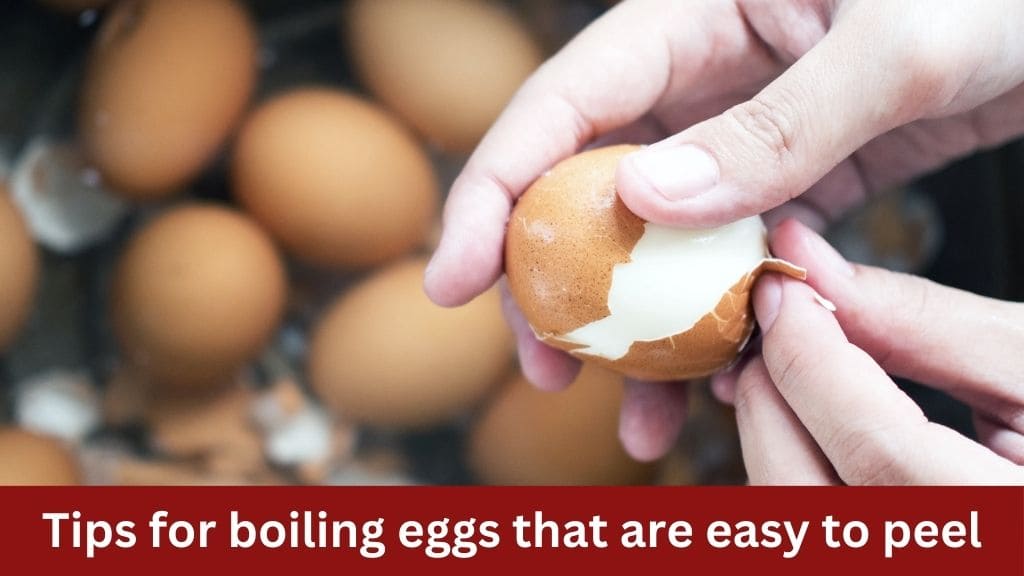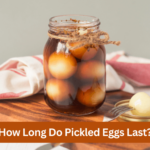Boiling eggs may seem like a straightforward task, but achieving perfectly cooked eggs with shells that peel off effortlessly can sometimes feel like a culinary mystery. Whether you’re preparing hard-boiled eggs for salads, snacks, or garnishes, mastering the art of boiling eggs for easy peeling can elevate your cooking game. In this comprehensive guide, we’ll explore a range of tips and techniques to ensure you consistently produce eggs with smooth, easy-to-remove shells.
Understanding the Basics

Before diving into the intricacies of boiling eggs for easy peeling, it’s essential to gain a deeper understanding of the foundational principles that govern the process. Let’s explore the key factors that influence the peelability of hard-boiled eggs:
Egg Freshness and Shell Adherence
The age of the egg plays a critical role in how easily it peels after boiling. As eggs age, the air cell within them gradually enlarges, creating a small gap between the egg white and the inner surface of the shell. This separation makes older eggs easier to peel compared to fresh ones, where the membrane adheres more tightly to the shell.
The Role of Cooking Time and Temperature
The cooking process itself significantly impacts the texture and peelability of hard-boiled eggs. Overcooking can result in rubbery egg whites and yolks with a greenish hue, while undercooking may lead to runny yolks and incomplete cooking of the whites.
Achieving the ideal balance involves precise control of both time and temperature. Cooking eggs at a gentle simmer rather than a vigorous boil helps prevent excessive agitation, which can lead to cracking. Additionally, adhering to a specific cooking time ensures that the eggs reach the desired level of doneness without overcooking.
Understanding Shell Integrity
The structure and integrity of the eggshell also influence its ease of peeling. Eggs with compromised shells, whether due to cracks or irregularities, may be more challenging to peel as the membrane beneath the shell may be damaged.
Proper handling and storage of eggs can help preserve shell integrity. Avoid subjecting eggs to sudden temperature changes, as this can cause thermal stress and lead to cracking. Storing eggs in a cool, dry place and handling them with care can help maintain shell integrity and improve peelability.
Tips for Perfectly Boiled Eggs
:max_bytes(150000):strip_icc()/EWL-6trickstoseeifboiledeggsaredone-hero-01-2000-9389c988ef1a425c9ccc656820d55e24.jpg)
Starting with Boiling Water: The Hot Start Method
Tip 1: Hot Start
- Contrary to conventional wisdom, beginning with boiling water rather than cold water can significantly enhance the peelability of hard-boiled eggs.
- By starting with boiling water, you initiate the cooking process immediately, which helps create separation between the egg white and the inner membrane, making the shells easier to remove later on.
Mastering Cooking Techniques
Tip 2: Gentle Simmer
- Maintaining a gentle simmer, as opposed to a rapid boil, is crucial for achieving tender, evenly cooked eggs.
- Excessive boiling can cause the eggs to bounce around in the pot, increasing the risk of cracking and compromising the integrity of the shells.
- Covering the pot with a lid helps retain heat and ensures consistent cooking, but be mindful not to allow the water to reach a vigorous boil.
Tip 3: Timing Precision
- Timing is of the essence when boiling eggs to perfection. Following a precise cooking time ensures that the eggs are neither undercooked nor overcooked.
- For hard-boiled eggs with fully set yolks, aim for a cooking time of approximately 10-12 minutes, depending on the size of the eggs.
- Adjust the cooking time slightly for softer yolks or larger eggs, but avoid overcooking, as this can lead to rubbery textures and difficulty peeling.
Cooling and Peeling Techniques
Tip 4: Ice Bath Shock
- Immediately transferring the cooked eggs to an ice water bath after the designated cooking time halts the cooking process and facilitates rapid cooling.
- The rapid cooling causes the egg whites to contract, creating separation between the egg white and the shell, which in turn makes the eggs easier to peel.
Tip 5: Tap and Roll Method
- To peel the eggs, gently tap them on a hard surface to create cracks all over the shell’s surface.
- Rolling the egg between your hands helps loosen the shell from the egg white, making it easier to remove.
- Begin peeling from the broader end of the egg, where air pockets often form, and work your way around the egg to ensure smooth, complete removal of the shell.
Troubleshooting Common Issues

Even with careful preparation, occasional challenges may arise when boiling eggs for easy peeling. Here are some common issues and solutions:
Cracking During Cooking
Issue: Cracked Shells
Cracks in eggshells can occur during cooking, compromising the integrity of the eggs and making them more challenging to peel.
Solution: Proper Placement and Handling
- Ensure that the eggs are arranged in a single layer in the pot, with enough space between them to prevent contact and minimize the risk of cracking.
- Avoid subjecting the eggs to sudden temperature changes, such as transferring them directly from boiling water to an ice bath, as this can cause thermal shock and lead to cracking.
- Handle the eggs with care throughout the cooking process to minimize agitation and reduce the likelihood of shell damage.
Difficulty Peeling
Issue: Stubborn Shells
Despite your best efforts, some eggs may prove resistant to peeling, leaving behind frustrating remnants of shell.
Solution: Patience and Technique
- Be patient and handle the eggs gently to avoid damaging the delicate egg whites while peeling.
- Consider soaking the peeled eggs in water for a few minutes to further loosen the shells before attempting to peel them.
- Utilize the tap and roll method, gently tapping the egg on a hard surface to create cracks before rolling it between your hands to loosen the shell from the egg white.
- Begin peeling from the broader end of the egg, where air pockets often form, and work your way around the egg to ensure smooth, complete removal of the shell.
Conclusion
Mastering the art of boiling eggs for easy peeling requires a combination of precision, technique, and patience. By following the tips and techniques outlined in this guide, you can consistently produce hard-boiled eggs with smooth, effortlessly removable shells. Whether you’re preparing a simple snack or a gourmet dish, the satisfaction of perfectly peeled eggs will elevate your culinary creations and delight your taste buds. Happy cooking!





